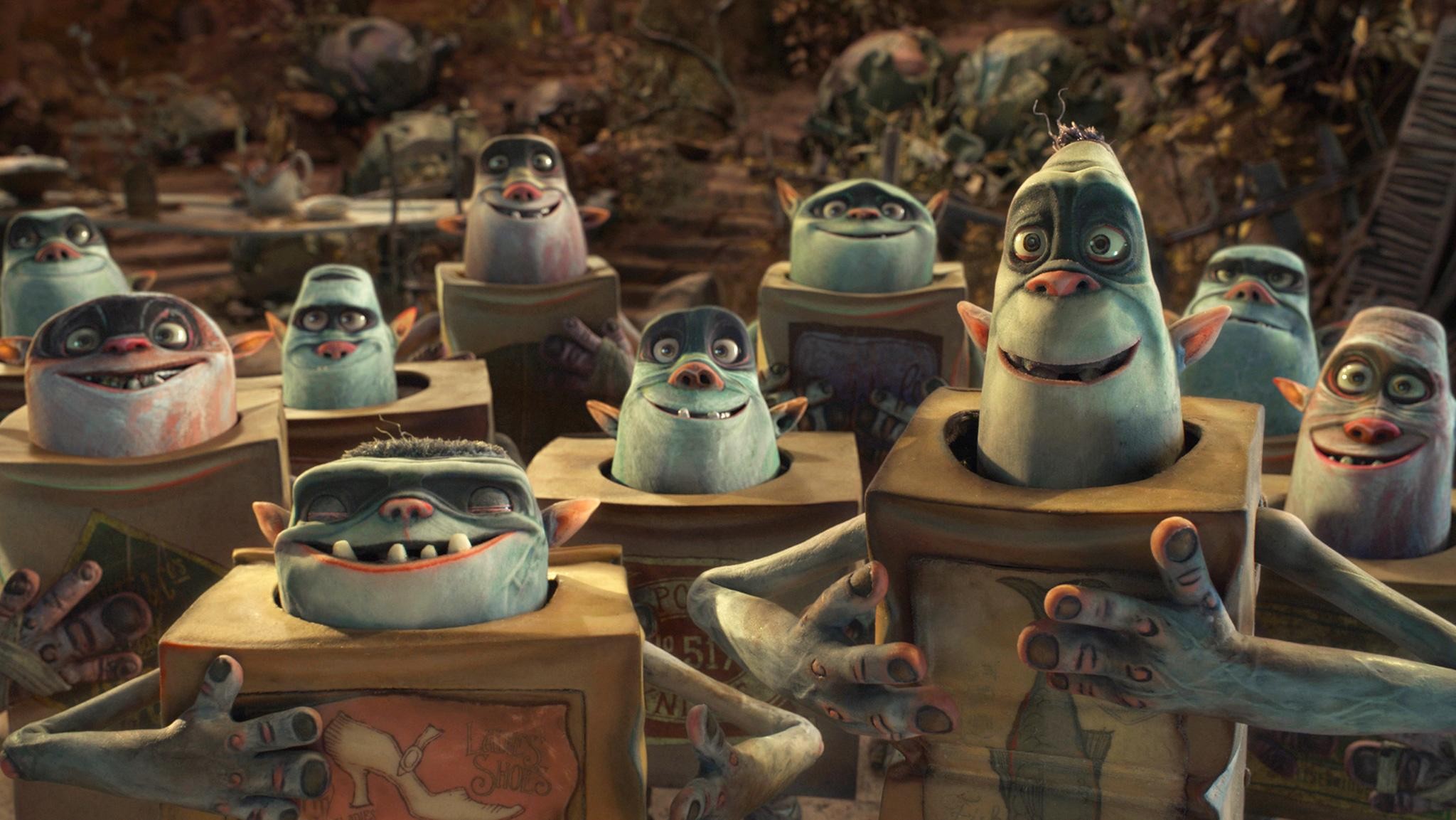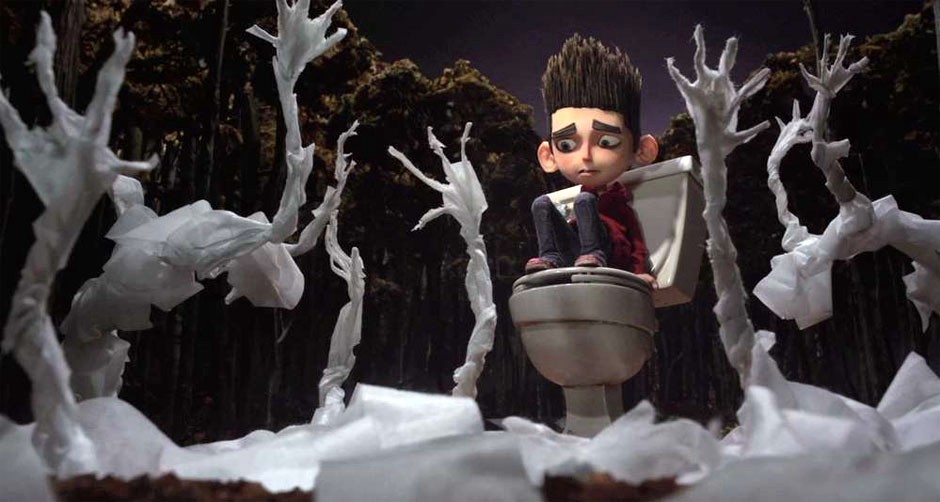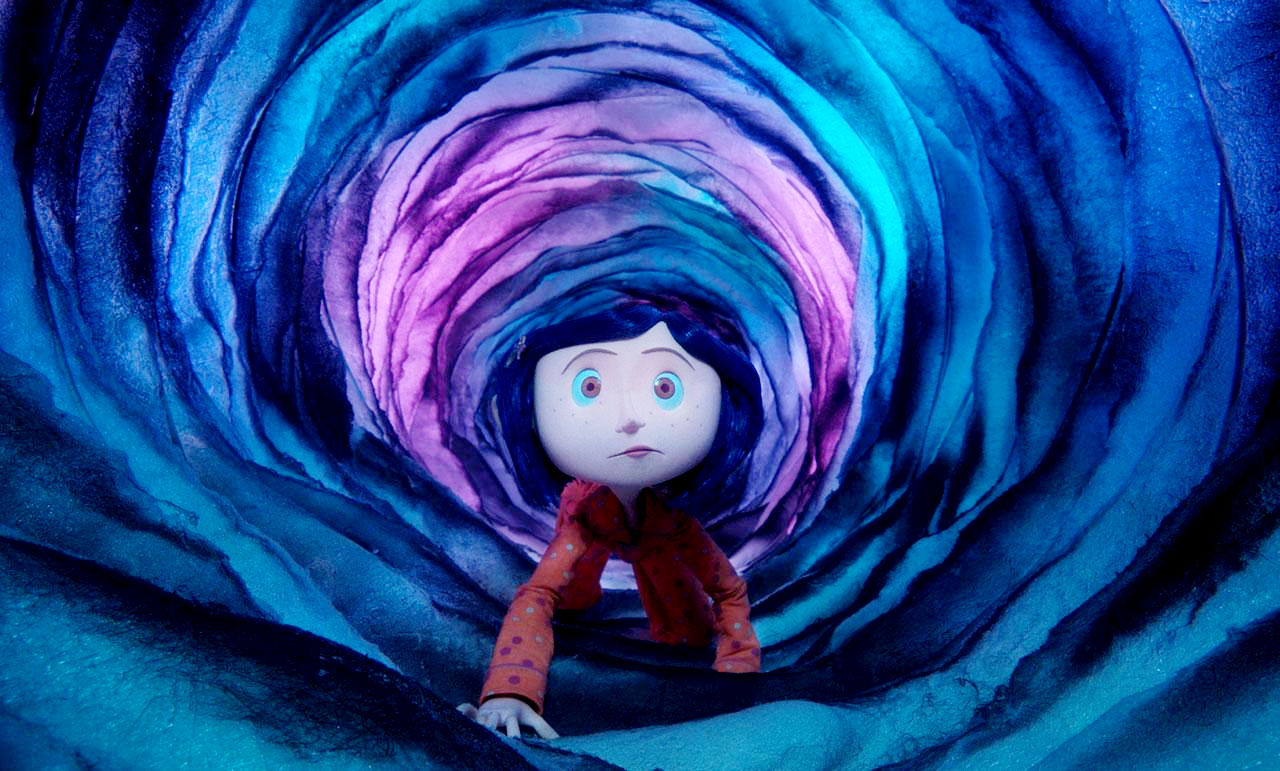3. The Boxtrolls (2014)

Eggs, a human orphan lives with the dirty underground creatures known as the boxtrolls, an artsy foil to the illumination entertainment’s dreaded minions. Living in the caverns beneath the cheese obsessed town of cheesebridge, they sneak out at night, stealing trash to create wonderful inventions. When the vile pest exterminator Archibald Snatcher and his cheese loving bureaucracy seek to destroy the Boxtrolls, Eggs joins forces with his new found human friend Winnie Portley-Rind to save them.
This is where Laika’s filmography starts getting great. The Boxtrolls is a delightful steampunk fantasy that’s equally charming and grotesque. The story is full of sweetness and genuinely holds suspense with Archibald Snatcher as Laika’s most disgusting scumbag of a villain. His nice, round, porty, pot belly, his mangly, toothy smile, and his nice, juicy rump gives any viewer a nice case of the heebie jeebies. The quirky, steam spewing inventions in the Boxtrolls’ world captures stop motion animation’s beautifully janky quirks, resulting in a fine film that deals with themes of greed and individuality.
2. Paranorman (2012)

Norman, a shy horror movie lover, is different, he has the ability to speak to the dead, and they’re all his best friends! Norman’s ESP abilities cause a lot of conflict in his life. When he sees dead dogs run over on the street, he pets their ghosts, much to his neighbor’s dismay; when he hangs out with his dead grandmother, his parents get very offended, and he gets bullied harshly at school, but who cares? Well, his creepy stalker of an Uncle Prendherghast does, and he warns Norman of an ancient witch’s curse that can only be stopped with Norman’s special sixth sense. When a turbulent apocalypse hurls itself at Norman’s hometown of Blithe Hollow, Massachusetts, Norman teams up with his cheerleader sister Courtney, his fat friend Neil, the school bully Alvin, and the school jock Mitch. This unlikely team must work together to undo the witch’s curse as Blithe Hollow’s townsfolk get violent.
Laika’s second feature is not only one of the studio’s best works, but is one of the best animated movies of the 21st century. Paranorman was the first film to use full color 3D printers for the stop motion technique known as replacement animation, and contains the first toilet paper stop motion in movie history. The film’s visual style was a challenge for Laika’s crew to execute, as it called for rounded, unproportional characters, so the puppets were built with special compartments within them for extra mobility. Laika’s later films gave us gargantuan, stop motion action sequences, but they lacked a certain human spirit. Paranorman marries Laika’s animated blockbuster setpieces with its original intimate touch. Norman’s morning routine of brushing his teeth and combing his uncombable, porcupine hair is just as captivating as a giant witch’s face laughing in the sky.
Jon Brion’s soundtrack is wonderful, creating musical moods that shift effortlessly from moving to macabre. Chris Butler’s screenplay is equally as fantastic; a dark, horror comedy that’s a kitschy quilt of John Hughes, George Romero, Sam Raimi, and The Sixth Sense, with bits of humorous homages to other iconic horror classics peppered throughout. This tale of alienation and acceptance teaches its audience that people are more than their stereotypes and don’t fit in boxes. Watch out for Paranorman’s touch of zen!
1. Coraline (2009)

Disappointed by her family’s recent move from Michigan to the old, creaky flats of the Pink Palace Apartments in Oregon, Coraline Jones sets out exploring her new house, where she discovers a secret door to a wondrous, alternate reality. In this strange new dimension, everything looks the exact same, except that everyone has buttons for eyes. Besides that one peculiar downside, everyone is nicer, and exactly the way Coraline wants them to be! As Coraline’s busy, real life parents get more and more absorbed into their working life, she grows increasingly attached to her alternate dimension, puppeteered by her overly sweet other mother.
Based on the beloved book by Neil Gaiman, Henry Selick adapts the source material perfectly, switching out emotional passages of heavy dialogue with tender moments of visual poetry. Laika’s other films rush from objective to objective, but Coraline meanders. This wandering pace gives us the opportunity to meet Coraline Jones intimately, paying off when we cry and smile with her as she displays vulnerability and growth. Coraline and her other mother’s established relationship gives the plot a suspenseful intensity that forces Selick to play all his stop-motion tricks to the max. To communicate different feelings, characters are animated at different frame rates, or utilize distinct replacement animation techniques.
And don’t get started on Coraline’s soundtrack, this masterful score by Bruno Coulais infuses creepy cooes with childlike fantasies through pianos, odd metallic boings, and it sounds like a children’s church choir singing along with a musical box.
An enduring cult classic that weaves iconic, memorable, and haunting images left and right, Coraline is not only one of the best animated films of the 21st century, it is one of stop motion animation’s greatest accomplishments. Surrealist and sinister, Coraline is an astounding work of dreamy, whimsical horror standing strong on the same shelf with such animated landmarks as Ghibli’s Spirited Away and Disney’s Alice in Wonderland, telling a touching tale on the importance of family, capturing a child’s view of life beautifully. This film is more than a swan song, it is a lullaby.